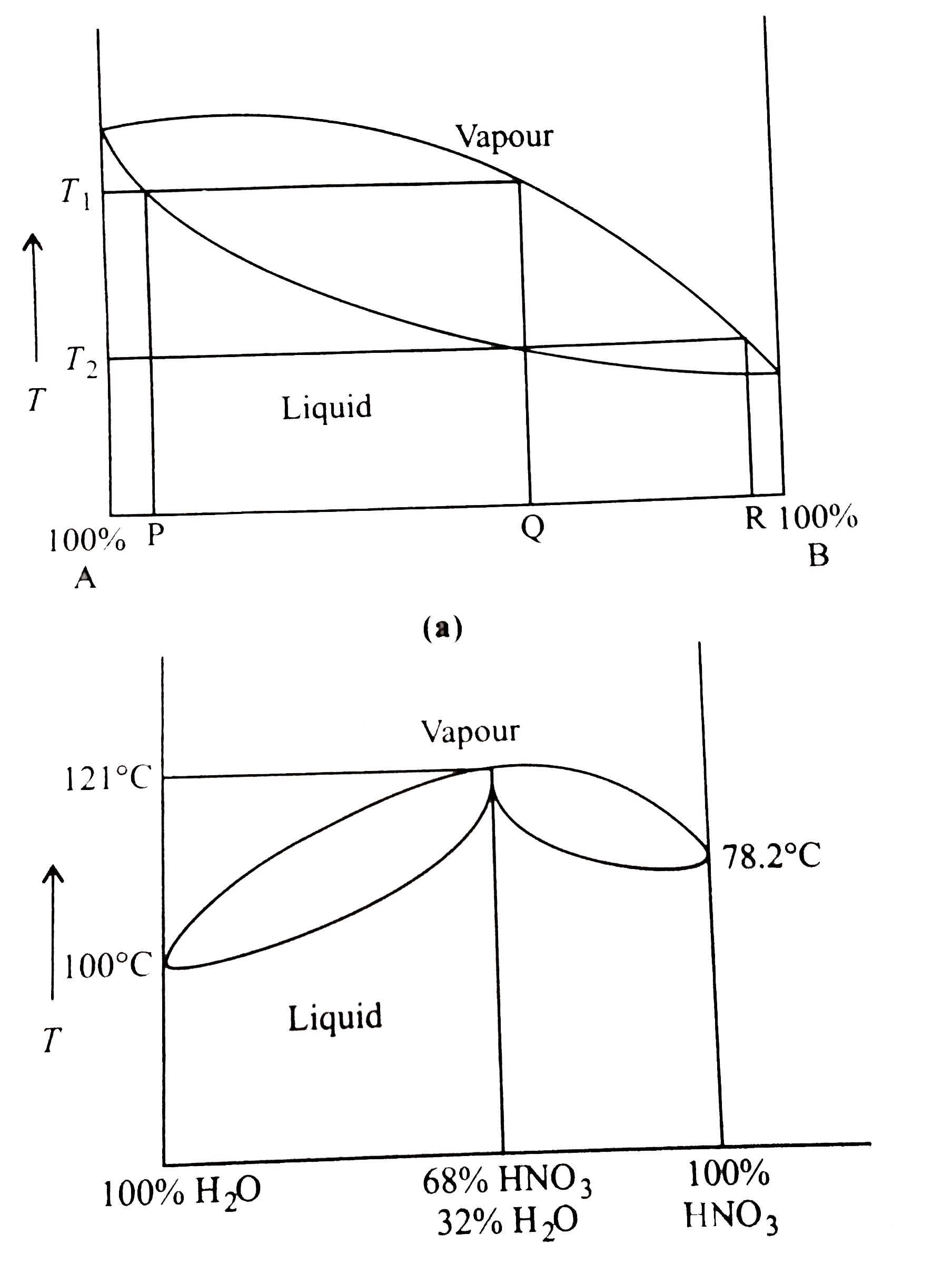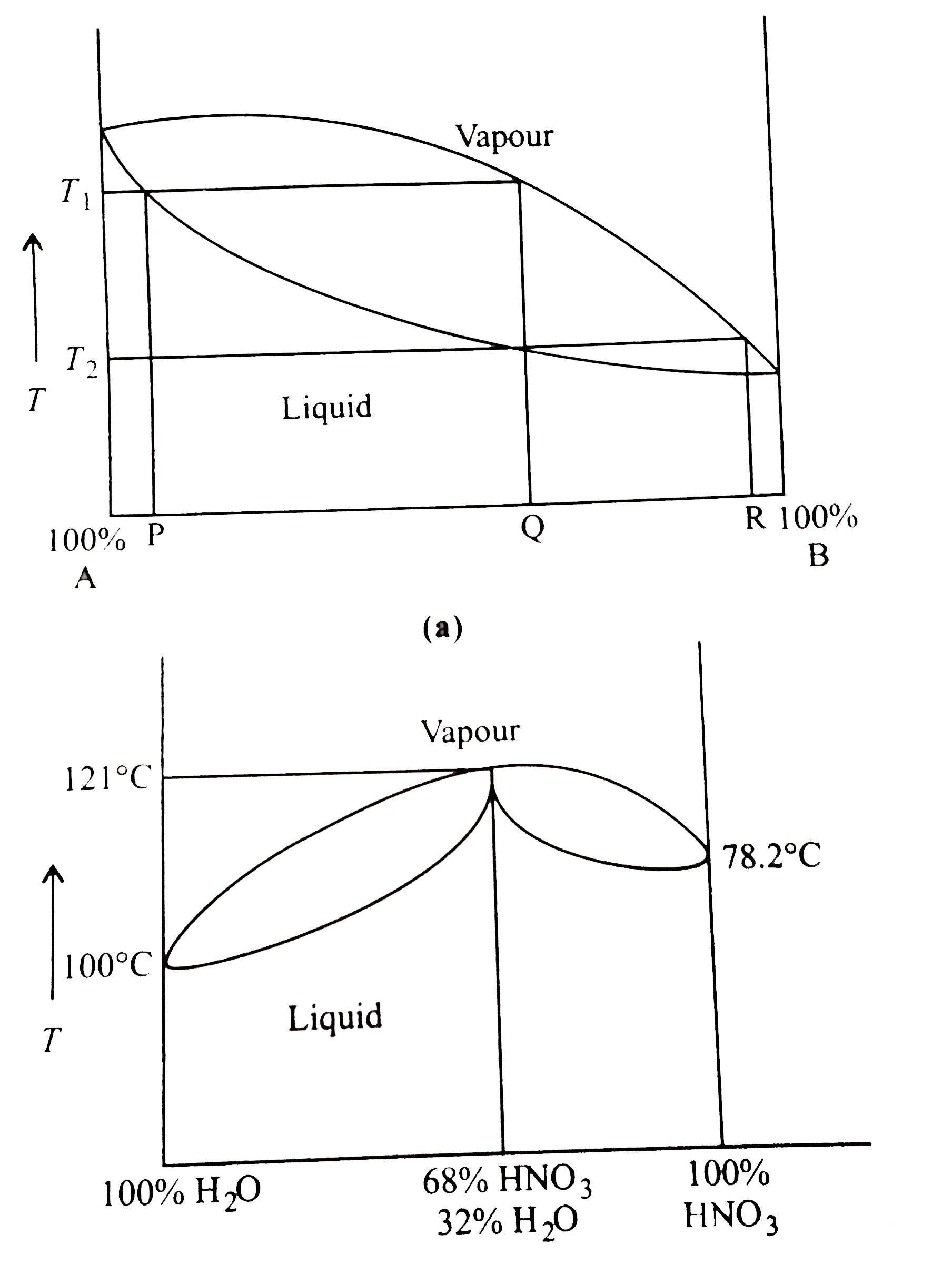A miscible mixture of C6H6+CHCl3 can be separated by
Sublimation
Distillation
Filtration
Crystallisation
The correct Answer is:B
To solve the problem of separating a miscible mixture of benzene (C₆H₆) and chloroform (CHCl₃), we can follow these steps:
Step 1: Understand the Properties of the Mixture
- Benzene (C₆H₆) and chloroform (CHCl₃) are both liquids and are miscible, meaning they can mix in all proportions without separating into different phases.
Hint: Identify the physical state and miscibility of the components in the mixture.
Step 2: Evaluate Separation Methods
- Sublimation: This method is not applicable here because both substances are liquids. Sublimation is used for solids that turn directly into gas without passing through the liquid state.
Hint: Recall the definition of sublimation and its applicability to states of matter.
- Filtration: This method is used to separate solids from liquids. Since both benzene and chloroform are liquids, filtration is not a suitable method.
Hint: Consider what filtration separates and the states of the substances involved.
- Crystallization: This method is used to separate solids from liquids by forming crystals. Since both components are liquids, crystallization cannot be applied.
Hint: Think about the process of crystallization and its requirements for solid formation.
Step 3: Identify the Suitable Method
- Distillation: This method is based on the difference in boiling points of the components. Benzene has a boiling point of 80°C, while chloroform has a boiling point of 61.2°C. Since they have different boiling points, distillation can effectively separate them.
Hint: Recall the principle of distillation and how boiling points are used to separate components.
Step 4: Describe the Distillation Process
- In the distillation process, the mixture is heated. As the temperature rises:
- Chloroform will vaporize first at around 61.2°C.
- The vapors of chloroform can be collected and condensed back into liquid form.
- After all the chloroform has been distilled off, the temperature can be increased to 80°C to distill benzene.
Hint: Visualize the distillation apparatus and the sequence of vaporization and condensation.
Conclusion
The miscible mixture of benzene and chloroform can be separated by distillation due to their different boiling points.
Final Answer: Distillation
- Benzene (C₆H₆) and chloroform (CHCl₃) are both liquids and are miscible, meaning they can mix in all proportions without separating into different phases.
- Sublimation: This method is not applicable here because both substances are liquids. Sublimation is used for solids that turn directly into gas without passing through the liquid state.
Hint: Recall the definition of sublimation and its applicability to states of matter.
- Distillation: This method is based on the difference in boiling points of the components. Benzene has a boiling point of 80°C, while chloroform has a boiling point of 61.2°C. Since they have different boiling points, distillation can effectively separate them.
- In the distillation process, the mixture is heated. As the temperature rises:
- Chloroform will vaporize first at around 61.2°C.
- The vapors of chloroform can be collected and condensed back into liquid form.
- After all the chloroform has been distilled off, the temperature can be increased to 80°C to distill benzene.
The miscible mixture of benzene and chloroform can be separated by distillation due to their different boiling points.
Similar Questions
A miscible mixture of benzene and chloroform can be separated by :
View SolutionA mixture of acetone and methanol can be separated by
View SolutionA mixture of 1∘,2∘ and 3∘ amines can be separated by Hinsberg's reagent which is
View SolutionA mixture of C2H6,C2H4 and C2H2 is bubbled through alkaline solution of copper (I) chloride, contained in Woulf's bottle. The gas coming out is:
View Solutionrepresents the distillation of mixture of liquid A and liquid B which gives both of pure liquid A and B . Represents the azeotropic mixture of HNO3 and H2O which distillation gives an azeotropic mixture and either of pure liquid. We cannot separate both the pure liquid, i.e., H2O and HNO3.

What is the result of distilling a mixture of 50%HNO3 and 50%H(2)O ?
a.Pure water and azeotropic mixtue can be separated.
b.Pure H2O and pure HNO3 can be separated.
c.Pure HNO3 and azeotropic mixture can be separated.
d.None of these
View SolutionGaseous benzene reacts with hydrogen gas in presence of a nickel catalyst to form gaseous cyclohexane according to the reaction:
C6H6(g)+3H2(h)⇒C6H12(g)
A mixture of C6H6 and excess H2 has a pressure of 60 mm of Hg in an unknown volume. After the gas has been passed over a nickel catalyst and all the benzene converted to cyclohexane, the pressure of the gas was 30 mm of Hg in the same volume and temperature. The fraction of C6H6 (by volume) present in the original mixture is :
View SolutionGaseous benzene reacts with hydrogen gas in presence of a nickel catalyst to form gaseous cyclohexane according to the reaction:
C6H6(g)+3H2(h)⇒C6H12(g)
A mixture of C6H6 and excess H2 has a pressure of 60 mm of Hg in an unknown volume. After the gas has been passed over a nickel catalyst and all the benzene converted to cyclohexane, the pressure of the gas was 30 mm of Hg in the same volume and temperature. The fraction of C6H6 (by volume) present in the original mixture is :
View Solutionrepresents the distillation of mixture of liquid A and liquid B which gives both of pure liquid A and B . Represents the azeotropic mixture of HNO3 and H2O which distillation gives an azeotropic mixture and either of pure liquid. We cannot separate both the pure liquid, i.e., H2O and HNO3.
What is the result of distilling a mixture of 80%HNO3 and 20%H2O?
(a)Pure H2O and azeotropic mixture can be separated.
(b)Pure H2O and pure HNO3 can be separated.
(c)Pure HNO3 and azeotropic mixture can be separated.
(d)None of these
View SolutionAn ideal gaseous mixture of ethane (C2H6) and ethene (C2H4) occupies 28 litre at 1atm 0∘C. The mixture reacts completely with 128gmO2 to produce CO2 and H2O. Mole of fraction at C2H6 in the mixture is-
View SolutionSimilar to % labelling of oleum ,a mixture of H3PO3 and P4O6 is labelled as (100 +x)% where x is maximum mass of water which can reacts with P4O6 present in 100 gm mixture of H3PO3 and P4O6
P4O6+H2O→H3PO3
For such a mixture of P4O6 and H3PO3 labelled as (100 +x)% .
Value of x can lie in range of (maximum and minimum) :
View Solution
